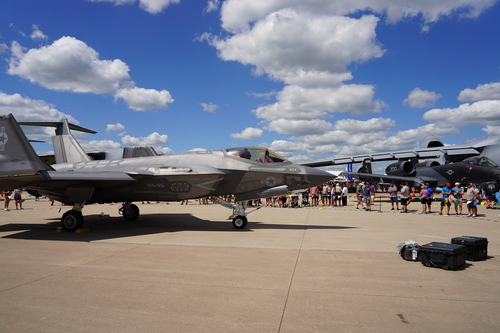
The skies have evolved into a domain where cutting-edge technology and speed define the victors, with fifth-generation fighter jets leading the charge into modern aerial warfare.

These formidable aircraft, developed by a select group of nations, represent the pinnacle of military aviation engineering, combining stealth, advanced avionics, and unparalleled firepower.

The United States boasts two highly sophisticated models: the Lockheed Martin F-22 Raptor and the F-35 Lightning II series.

The F-22 emerged in 1997. Despite its age, the F-22 remains one of the most advanced fighters ever created, especially in terms of stealth and maneuverability.

Engineered as a fifth-generation fighter, the versatile F-22 is engineered to excel across a broad spectrum of missions, from establishing air dominance to conducting ground strikes and engaging in electronic warfare and reconnaissance operations.

Its lightweight design and carbon fiber composite structure render it less conspicuous and more elusive, featuring a minimized cross section that emits decreased levels of sound and radio waves.

Unfortunately for international allies, no F-22 Raptors have ever been exported due to its strategic advantages and exorbitant cost, which peaked at $350 million per unit.

The Lockheed Martin F-35 Lightning II represents the latest fifth-generation fighter aircraft for the United States, possessing the ability to undertake numerous roles akin to the F-22 Raptor while being more cost-effective.

Developed by Lockheed Martin in collaboration with Northrop Grumman and BAE Systems, the fighter conducted its inaugural flight in 2006 before entering operational service in 2015.

It offers a more cost-effective multirole solution that has been exported to allies, including Australia, Canada, Japan, and the United Kingdom.

Russia has entered the fifth-generation arena with the Sukhoi Su-57 Felon jet. The Su-57 boasts a top speed of around Mach 2 and a range of 2,175 miles, armed with missiles, rockets, and a powerful autocannon.

Despite being operational since 2020, Russia has produced a modest number of these jets compared to its U.S. counterparts.

While the U.S. and Russia currently field operational fifth-generation fighters, other nations are not far behind.

Turkey’s TAI TF Kaan stands out as one of the most advanced aircraft, emerging from a collaboration between Turkish Aerospace Industries and BAE Systems. Full production and deployment into active service are not anticipated until the earliest in the 2030s.

India is also actively engaged in a fifth-generation fighter development initiative. The HAL AMCA is in its nascent design phases, with the Indian government sanctioning funds for a prototype only in March 2024. The aircraft is envisaged to feature two variants, with the subsequent iteration integrating sixth-generation technologies like hypersonic weaponry.
Relevant articles:
– Every 5th-Generation Fighter Jet Operational In 2024, SlashGear
– All about India’s indigenous fifth-gen fighter jet Advanced Medium Combat Aircraft (AMCA), and why it is important, indianexpress.com
– Air & Space Forces Magazine, Air & Space Forces Magazine
– 5th Gen Fighters, Stealthy & Lethal, SP’s Aviation
